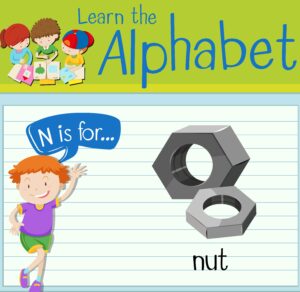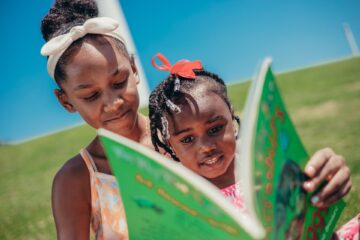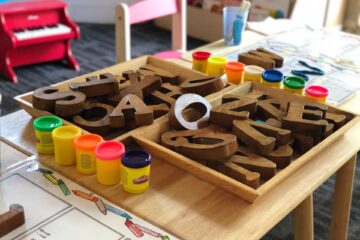Hey there, what do you think about flashcards for children?
When it comes to learning, there’s no one standard to teach children. But they should take part in learning actively.
Kids are creative, and when it comes to learning new things, there are a lot of possibilities. The use of flashcards for children is one of the various methods employed when teaching them.
At the end of this article, you will find out what flashcards are, their importance, and how to use them. As a bonus, I included some tips on how to make one, as well as, a few examples of subjects you should create flashcards on.
Well then, let’s begin…
Table of Contents- What Are Flashcards?
What Are Flashcards?
Flashcards are cards that contain information about a particular subject. Information in flashcards could include pictures, words, and numbers.
Most flashcards have information on both sides, usually questions and answers, language translations, or fun facts.
But wait, we are talking about kids here, right?
When using flashcards for children (specifically, toddlers), you do not have to use flashcards with questions on them, especially if they can’t read or understand.
If you intend to use flashcards effectively, then there is one more thing to consider.
Consider having fun with your children while creating or using it, children never forget positive emotions and good times.
According to play specialist, O. Fred Donaldson, Ph.D., “Children learn as they play. Most importantly, in play, children learn how to learn”.
It’s a win-win, kids get to play and learn.
This means that for an effective learning session, having fun is essential. You can also play some fun games when you take breaks (this is very important) or let them be.
Now that we know what flashcards are, let’s find out if they are good and effective in teaching your kids.
Importance Of Flashcards: 5 Reasons Why Flashcards Are Effective
Memory Aid
Introducing new words and concepts via flashcards enables the child to memorise them, and learn how to use them.
But let’s not forget to make it intriguing.
For kids in the age group 1-5, flashcards should be eye-catching, bright, colourful, and clear, yes you do not want an apple looking like a red ball.
Active Learning Process
According to American author and educator, John Caldwell Holt, “We learn to do something by doing it. There is no other way.”
It’s the same for kids too.
When children engage actively in the flashcard making processes (I call them inventors), it makes learning even simpler and faster. It also allows them to be creative, to teach, and learn.
Do you know that research has shown that the use of flashcards improves communication in autistic children? That’s why it is more than just a means for memorising words.
Finding Out What They Already Know
When using flashcards or making them with kids, you get to find out how much they know and how they perceive things.
This can be used to track their progress and make teaching easier.
For example, Michael, a two-year-old, believes that any vehicle (trucks, vans, and tricycles) is a car. With this information, I can teach him the differences between them.
Building Their Self-Esteem
It does feel good when you know something, more like when you can give answers to questions without stress.
Well, guess what?
Kids feel the same way too. When they create flashcards or get the answers to them. There is this joy on their faces, it’s hard to miss it.
They grow to be confident in conversations with you and when talking to their peers too.
Finding Out Where Their Interest Lies
Here’s a case study…
Little Jane prefers learning about nature to learning maths, how do I know?
She loved the flashcards that had trees, moon, flowers, and stars. She also finds it easier to talk about them. However, she avoids maths flashcards.
Not only does this help us know her interests (she loves planting too), but it also gives us insight as to how to deal with her maths problem.
We taught her to count using plants, pebbles, and the stars.
There are more insights to get when using flashcards for kids.
The question is how can you use flashcards for children, or where do you start from?
How To Use Flashcards For Children
Here ishow to use flashcards for kids:
Pick a card and ask a question
This is an easy way to teach brainstorming, but you have to be patient, especially if you are just starting.
This exercise helps children to get familiar with new words, especially when you tell them about the things they don’t know.
Use the game method
You can take turns, pick a card, ask a question, and have the child do the same.
This allows the child to share his/her knowledge with you, and we indeed learn even better as we teach.
Take breaks
While using flashcards, you should try as much as possible to avoid using them for too long, it might become tiring and uninteresting to the child if you do.
You can take short breaks or pick a specific time of the day for using flashcards to teach them.
This will enable them to be active while learning.
Don’t push too hard
Indeed, everyone learns at a different pace, and that’s how it is for children too.
The use of flashcards is a learning method that requires memorising, some children learn more by seeing and doing – that’s why it’s advisable to involve the child in the flashcard making process.
However, memorising might not be what your child needs, so don’t push it. It will make learning uncomfortable and scary for them.
Most importantly, don’t forget to have fun with your children while learning. Plato did say “Do not keep children to their studies by compulsion but by play.”
How To Make Your Very Own Flashcards For Kids

These days, you can purchase flashcards on various subjects and that is fine too.
However, if you do have enough time, it’s best to involve kids in the process of making flashcards. This will enable them to tap into their creative side.
Here are a few tips on how to make them:
- Get a large, plain card, scissors, crayons, and a ruler for accurate measurement.
- Cut the cards into large squares. Bigger flashcards are recommended for children within the age group of 2 to 5 years old. That’s the advantage of making them yourself.
- Try not to make it too big, or you might end up with a chart.
- Passing the crayons – while making a flashcard, a child can learn more about colours by passing you the colours you want. To make this even fun allow the child to suggest a colour too.
- Group the cards base on subjects. You should have a box or bowl for each subject.
- You can also make it a creative exercise by allowing them to create their flashcards, regardless of what they create.
The following are a few suggestions on the types of flashcards you can create for your child:
- Numbers
- Math symbols
- Alphabets
- Objects around the house
- Shapes and colours
- Nature
- Fruits
- Animals
- Simple word and pictures
The list is endless and there are no limits.
If you do not have the time to cut and create flashcards for your kids, there are other ways to get one, and you can still involve them in the process.
Nowadays, some apps allow you to create flashcards for teaching your children, even for toddlers. These apps are not limited to a particular subject either, moreover, you can always customise them.
Keynotes
To be honest, when it comes to early education, there is no standard or perfect way to teach children.
It varies, this variation can be because of the environment, the interests of the child, and the personality of the child.
The bottom line is that children are individuals too, hence they can also feel uninterested in learning, or may even want to play more (who wouldn’t?). But most times, we tend to forget because of how small they are.
Now is the time to try these new ideas and find out what your child likes. Have fun and good luck!

Helen Enubiaka
A down to earth bibliophile who loves to write when she isn’t reading. And I love talking to kids as well. PS: Kids are fun when they aren’t getting you all worked up.


